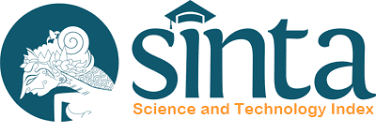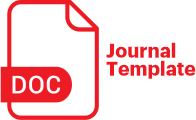Batik Motif From The Movement Of Dynamics Harmoic Waves
DOI:
https://doi.org/10.26555/jim.v10i1.30868Keywords:
Dynamic harmonic waves ,, Wave movement ,, Wave displacement ,, Wave partitioning,Abstract
This batik motif is inspired by the movement of waves in the context of dynamic harmony. Through mathematical and philosophical analysis, wave motion is explored as a symbol of life that constantly changes yet remains harmonious. The methods used include studies on wave displacement, wave partitioning, and the dynamics of waves on a string fixed at one end. Each phase of wave movement is interpreted from the perspective of culture and life values, inviting the viewer to understand the beauty in change and appreciate diversity. Through this motif, the creator wishes to convey that beauty can be found in the dynamic fluctuations of life, inspiring one to face challenges with balance.
References
A. Supratama, “TINJAUAN KASUS PERSAMAAN GELOMBANG DIMENSI SATU DENGAN BERBAGAI NILAI AWAL DAN SYARAT BATAS.,” J. Kaji. dan Terap. Mat., vol. 6, no. 1, pp. 67–78, 2017.
Chasnov, J. R, " 9.6: Solution of the Wave Equation. Mathematics LibreTexts", 2021
Wheeler, D, " Solutions to the Wave Equation. Utah State University", 2019
Mahaffy, J. M, " Math 531 - Partial Differential Equations - Vibrating String. San Diego State University", 2023
Java is Beautiful. "Physics of Batik: Creative Implementation through Fractal Nature on Batik Computationally", 2012
Purdue University, " 10.7 The Wave Equation: Vibrations in an Elastic String", 2017
Ulani Yunus, Dominiq Tulasi, " Batik Semiotics as a Media of Communication in Java ", Cultura. International Journal of Philosophy of Culture and Axiology 9(2)/2012: 143−150,
2023
Downloads
Published
Issue
Section
License
Copyright (c) 2025 Sugiyanto, Bariromah, Awliya Amali Tazkiya, Ratna Sinta Dewi, Musyarofah Nurul Maisaroh

This work is licensed under a Creative Commons Attribution-NonCommercial-ShareAlike 4.0 International License.
Authors who publish with this journal agree to the following terms:
1. Authors retain copyright and grant the journal right of first publication with the work simultaneously licensed under a Creative Commons Attribution License that allows others to share the work with an acknowledgment of the work's authorship and initial publication in this journal.
2. Authors are able to enter into separate, additional contractual arrangements for the non-exclusive distribution of the journal's published version of the work (e.g., post it to an institutional repository or publish it in a book), with an acknowledgment of its initial publication in this journal.
3. Authors are permitted and encouraged to post their work online (e.g., in institutional repositories or on their website) prior to and during the submission process, as it can lead to productive exchanges, as well as earlier and greater citation of published work.

This work is licensed under a Creative Commons Attribution-ShareAlike 2.0 Generic License.









